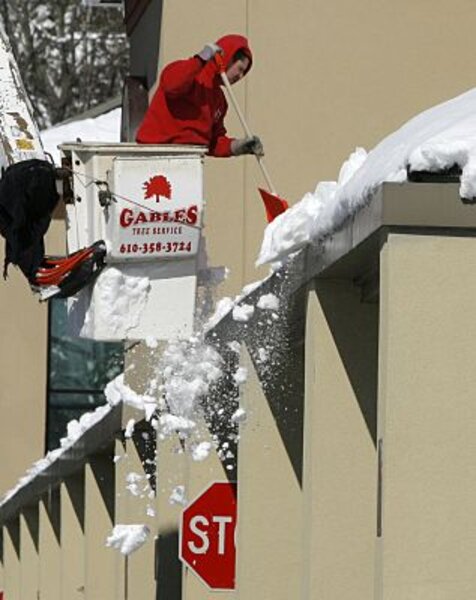State of Delaware: Snow economics explains long state of emergency
Loading...
The blizzards of 2010 have hit the part of the United States with the highest snow-removal costs – and a painfully slow recovery period.
When two snowstorms of historic proportions hit within a week of each other, cities like Baltimore and Washington, D.C., were buried. Delaware declared a state of emergency. For the first time in US history, snow closed down the federal government for four consecutive days.
But the slow response isn't a lack of winter fortitude (as some smug northerners might think). It's mostly economic.
It doesn't snow enough in states like Maryland and Delaware to justify investing in a lot of money in snow-clearing equipment.
If big snows hit only once every 10 years, "how much budget do you allocate?" asks Ben Reng, director of account management for Integrated Building Maintenance, a Draper, Utah, company providing snow-removal and other facility services to businesses around the country. "It's not a good use of your finances."
So snow-clearing crews in Middle Atlantic states have less equipment, which is often not as well maintained, than their snow-savvy counterparts in upstate New York or the Upper Midwest. The result is a much slower, costlier response.
"You dump two feet of snow in Minneapolis, they may close the schools, but they'll be up and running in 24 hours," Mr. Reng says. "In D.C., they'll be down for four days."
The back-to-back snowstorms dumped so much snow in the region that by Thursday, Washington and Baltimore had broken seasonal snowfall records dating back to the late 1800s. Reng estimates it typically costs those cities twice as much or more to clear up from major snowstorms than it does for, say, Minneapolis.
Northerners are right about one thing: Snow-clearing crews in these regions have less experience handling snow.
"They don't get as much practice, especially with all these huge storms," says Brian Birch, assistant executive director of the Snow & Ice Management Association, which is based in Milwaukee. "Plowing and salting roads is a skill."
Just as important as the state and municipal snow-clearing equipment are the snowplows in the hands of businesses and private individuals. They're the ones who typically clear sidewalks and parking lots. And again, there's just less equipment in their hands than in New England.
Then there's the public, which seems to grow less tolerant about snow-choked streets and sidewalks the farther south they're located, Mr. Birch says. Citizens of Buffalo, N.Y., by contrast, tend to understand when side streets aren't plowed after a major storm.
"Public perception is a bigger part of it than we realize," he says.





